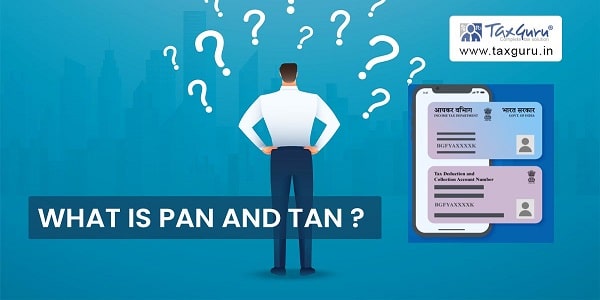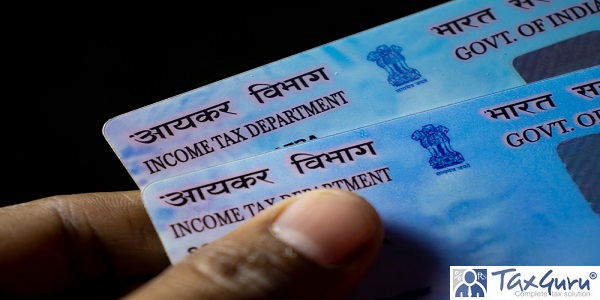WHAT IS PAN AND TAN?
PERMANENT ACCOUNT NUMBER (PAN):
PAN is assigned to all the taxpayers in India as an identification number. PAN number is a single number which is an electronic system and has all the tax related information for a company or for a person. This act as a primary key for storing information and it can be shared all over the country. There cannot be any entities who have same PAN.
ELIGIBILITY:
PAN card can be issued to an individual, NRI (Non-Resident Indians), companies or anyone who is paying tax in India.
STRUCTURE OF PAN CARD:
PAN card accommodate information like an identity, complies related with Know Your Customer guidelines, and Age proof.
Details of PAN card are as follows:
Cardholder’s Name: Applicable to Individual and company.

Cardholder’s Father’s Name: Applicable to cardholder who is an individual.
Date of Birth: Date of Birth shall be mention if the cardholder is an individual and date of registration shall be mention if the cardholder is a company.
PAN Number: PAN Number is a 10 letter alpha numerical number and the each number represents clear information of the cardholder. Which are explained as follows:
Example – AAAPG1234P
- First three letters: These letters are totally alphabetical and it contains letter from A-Z.
- The fourth letter: This letter represents the classification of the taxpayer. The various entities and their respective nature are as follows:
1. A – Association of Persons.
2. B – Body of Individuals.
3. C – Company.
4. F – Firms.
5. G – Government.
6. H – Hindu Undivided Family.
7. L – Local Authority.
8. J – Artificial Judicial Person.
9. P – Individual.
10. T – Association of person of trust.

- The fifth letter: The Fifth letter represents the initial of cardholder’s which is individual’s surname.
- Remaining letters: Remaining letters are randomly based, the first four character are number and last one is an alphabet letter.
Individual’s Signature: The PAN card also have signature of the individual which is needed in some financial transaction.
Individual’s Photograph: Photograph on the PAN acts as an identity proof for an individual, in case of companies and firm there is no photograph on the card.
TAX DEDUCTION ACCOUNT NUMBER (TAN):
In India, under Central Government, the Income Tax Department issues 10 digit Alphanumeric Number to every person who has responsibility of TCS (Collecting Tax at Source) or TDS (Deducting Tax at Source). The number which is given is really unique and it is called as TAN. As per Section 203A of the Income Tax Act, 1961, the TAN number shall have to be written on every TDS returns filed.
ELIGIBILITY:
TAN Number can be issued to an individual, company, enterprise, or a firm and in case of company or organization they will be treated as an individual.
STRUCTURE OF TAN:
The identifier will find many details which is encoded by using the combination of letters and numbers. The details of this are given below:
Example: PDES01011F
- The first three alphabets of TAN Number represent the jurisdiction code of holder.
- The fourth letter is an initial of name of the holder.
- The fifth letter is single identifying number which has no significance added.
- The last letter is alphabet and it is unique identifying entity.
DIFFERENCE BETWEEN PAN AND TAN:
| PARAMETERS | PAN | TAN |
| 1. ISSUED BY: | The Income Tax Department | The Income Tax Department |
| 2. REQUIRED BY: | Every Taxpayers | All the individuals and firms who pays tax at source. |
| 3. GOVERNING LAWS: | Section 139 of Income Tax Act, 1961. | Section 203A of the Income Tax Act, 1961. |
| 4. IDENTIFYING CODE: | 10 Digit Alphanumerical Code. | 10 Digit Alphanumerical Code. |
| 5. PRIMARY PURPOSE: | It acts as all-in-one code and it gives permission for all financial transactions. | It makes TDS procedure easier. |
| 6. NECESSARY FORMS: | For citizen of India – Form 49A.
For foreigners – Form 49AA. |
Form 49B. |
| 7. MAXIMUM NUMBER THAT CAN BE HELD: | One. | One. |
****
Author- Adv.Shivam Kumar | Legel and content Executive, Taxblock India Pvt. Ltd





